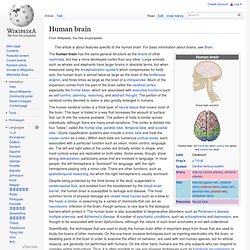

Rise of Neurocinema: How Hollywood Studios Harness Your Brainwaves to Win Oscars. One thing you aren't likely to hear Sunday night from the Oscar-winning producer after accepting the trophy for Best Picture: "I'd like to thank my neuroscience partners who helped us enhance the film's script, characters, and scenes.

" It's not that far-fetched, though. A sizable number of neuromarketing companies already brain test movie trailers for the major studios through fMRI, EEG, galvanic skin response, eye-tracking and other biometric approaches. For now, the test data helps the studios and distributors better market the movie. But what about using brain feedback to help make the movie? A trailblazing few firms and studios have delved into the upstart practice of "neurocinema," the method of using neurofeedback to help moviemakers vet and refine film elements such as scripts, characters, plots, scenes, and effects.
Stephen Susco, who wrote the $187 million grossing horror movie Grudge, is not a practitioner of neurocinema. Other filmmakers seem divided. Brain activation in a complex stimulus. Human brain. The human brain has the same general structure as the brains of other mammals, but has a more developed cortex than any other.

Large animals such as whales and elephants have larger brains in absolute terms, but when measured using the encephalization quotient which compensates for body size, the human brain is almost twice as large as the brain of the bottlenose dolphin, and three times as large as the brain of a chimpanzee. Much of the expansion comes from the part of the brain called the cerebral cortex, especially the frontal lobes, which are associated with executive functions such as self-control, planning, reasoning, and abstract thought.
The portion of the cerebral cortex devoted to vision is also greatly enlarged in humans. The human cerebral cortex is a thick layer of neural tissue that covers most of the brain. This layer is folded in a way that increases the amount of surface that can fit into the volume available. Structure[edit] Human brain viewed from below Four lobes[edit] Psychopaths aren't just mentally different - their brains are physically deformed to prevent them feeling fear or guilt. By Rob Waugh Updated: 12:54 GMT, 23 November 2011 Brains of psychopaths have 'broken links' between parts responsible for empathy and guiltMRI scan can determine if someone is a psychopath One per cent of people are psychopaths - but four per cent of business leadersResearch offers hope of a 'cure' Psychopaths such as Hannibal Lecter - Anthony Hopkins' character in Silence of the Lambs - have detectable, physical differences in their brains.

The news could help 'screen' for psychopaths - and even help treat the formerly untreatable disorder Psychopaths such as Hannibal Lecter - Anthony Hopkins' character in the film The Silence of the Lambs - are callous, anti-social and sometimes violent. They are incapable of feeling empathy or guilt. Many lead 'normal' - even successful - lives. One per cent of the population at large is generally reckoned to be psychopathic - but up to 20 per cent of the prison population is reckoned to be psychopathic. Student Research Center - powered by EBSCOhost: At the movies, a swirl of emotions can color your. Academia.edu - Share research. Neurocinematics: The Neuroscience of Film. Projections Volume 2,Issue 1,Summer 2008:1–26 © Berghahn Journalsdoi:10:3167/proj.2008.020102 ISSN1934-9688 (Print),ISSN 1934-9696 (Online) Neurocinematics:The Neuroscienceof Film Uri Hasson,Ohad Landesman,Barbara Knappmeyer,Ignacio Vallines,Nava Rubin,and David J.Heeger Abstract: Keywords: fMRI,inter-subjectcorrelation,cognitive film theory,social neuro-science,cognitive control Introduction Cinema takes viewers through an experience thatevolves over time,grabbingtheir attention and triggering a sequence of perceptual,cognitive,and emo-tional processes.Throughoutthe years filmmakers have developed an arsenalof cinematic devices (e.g. continuity editing,close-up) to directviewers’ minds during movie watching.These techniques,which constitutethe formal structure and aesthetics of any given cinematic text,determinehow viewers respond to the film.While the idea thatmovies can have a tightgrip on viewers’ minds has been acknowledged since the early days of cin-ema,

BibMe: Fast & Easy Bibliography Maker - MLA, APA, Chicago, Turabian - Free.